Best Small Bonsais for Windowsills
If you enjoy this article, you should have a look at some of our other posts in this series:
1. Best bonsai plants for the office
2. Best small bonsais for windowsills (you are here) 🌳
3. What succulents can you grow as bonsais?
4. Best water-friendly bonsais
5. Bonsai linked to better office productivity
6. How bonsai helps with focus and goals
7. Bonsai wedding gift as a sign of patience and care
There are many situations where you may want small bonsais for windowsills. Whether it’s for the office or home, there are many dangers to keeping it on the sill. Still, it adds to the scenery, and you may want to grow some saplings there.
While we’ll show you which bonsais work best for windowsills, we’ll also guide you towards proper care. There are some aspects you’ll need to keep in mind towards the health and security of your beautiful tree. We also want to discuss how small bonsais can be.
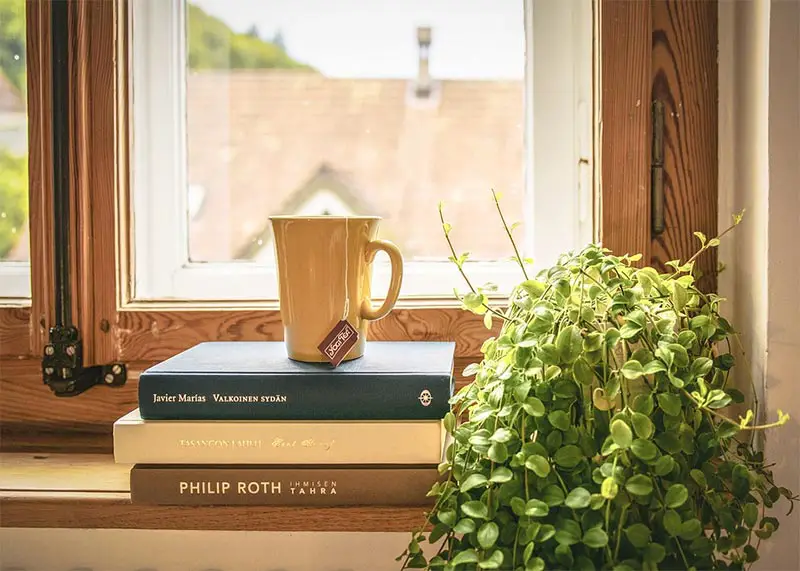
Table of Contents
What is the Smallest Type of Bonsai Tree?
To paint a picture of relativity, it’s necessary to understand what ‘small’ is in the bonsai world. While bonsais are already small versions of trees in nature, there are three specific classifications. These classes are miniature, medium, and large (massive, if you’re aiming for alliteration).
When it comes to miniature or small, we have three categories:
- Kenshitsubo: up to three inches
- Shito: up to four inches
- Shohin: up to six inches
However, when we look at small bonsais for windowsills, we have to look at it from a different perspective. The standard classifications mainly apply to height, which doesn’t appear relevant to sills. In this scenario, we’re more concerned with the width of the surface you’re placing the pot on.
You may not know this yet, but the two are actually related. If you’re mastering the art of bonsai to every technical detail, you’ll know that the pot’s size is relative to the height of the tree. In most cases, the container’s width should be ¾ the tree’s height.
So when you’re looking for small windowsill bonsais, you’ll first need to see what pot diameter or width it can take before deciding what tree size you can place there. There are some apartments with deep sills, which allow for several containers. Others have narrow ones, in which case you might want to aim for one of the ‘small’ sizes mentioned above.
Top Small Bonsais for Windowsills
It’s time for us to show you our recommended list of small bonsais for windowsills. There are plenty of others you can use, but we feel these are the best for appearance and functionality.
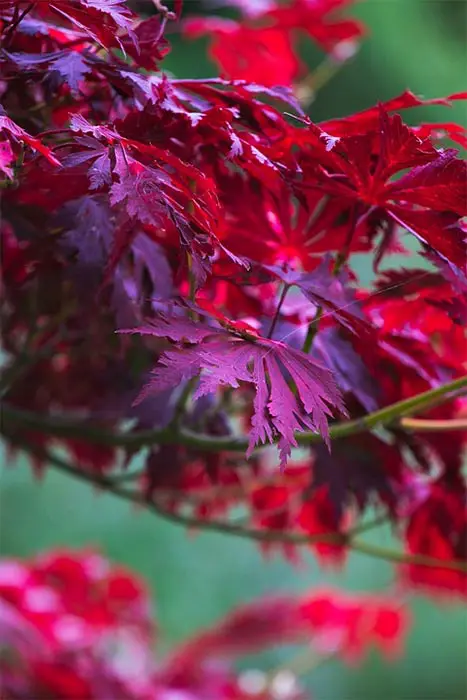
Japanese Maple
When it comes to Acer palmatum, it’s easy to keep this bonsai small for your window ledge. If you continue to prune it in spring and summer, the growth rate will slow down and the leaves won’t expand too far. There are many red Japanese Maples with dense foliage in small containers.
This species is popular as an ornamental bonsai, which is why it’s well suited for sills. The red palmate leaves will go well with books and red crystals. When autumn arrives, you’ll behold the wonderful color change in the leaves, which is why it’s a top choice by bonsai enthusiasts.
Japanese Box
Also known as Boxwood or Buxus sempervirens, it’s a hardy species that can handle even the toughest conditions. While many grow it to be quite large, you can easily keep it small without stressing it out. Many companies used the actual tree in landscaping, as it presents an outstanding design.
It enjoys shaded sunlight, which works well if you have tints on your windows or the side of your home or office facing away from the sun. Even as a small bonsai, the dense foliage looks stunning in summer. However, too much sunlight can cause the tiny leaves to burn.

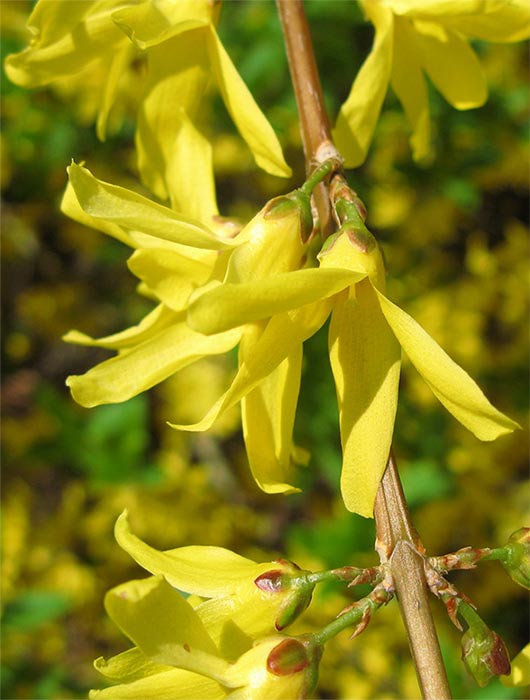
Image courtesy of 4.0 International
Weeping Forsythia
A rare name in the bonsai world, Forsythia suspensa is also known as the golden bell. It has stunning yellow flowers in summer that make it stand out, complementing the bright sunlight through your window. It will also brighten up any dull office environment or add some flair to your living area.
If you’re growing it as a small bonsai for your windowsill, you’ll want to aim for the clump style. You won’t need a massive container for it, and the dome foliage is suitable for any space. When you water it, make sure you don’t get any liquid on the leaves or flowers and only on the soil.
Deutzia
The Deutzia genus has about 60 species from which you can choose, with several suitable for your window ledge. Most people aim for the Japanese cultivars, Deutzia scabra and Deutzia gracilis. The aspect that will bring you the most joy is the small star flowers that are either pink or white.
The flowers have a strong fragrance, which will spruce up your office or home. The leaves are brought green, and you can aim for a small umbrella style with the foliage. It will create a canopy of flowers when the summer season arrives.

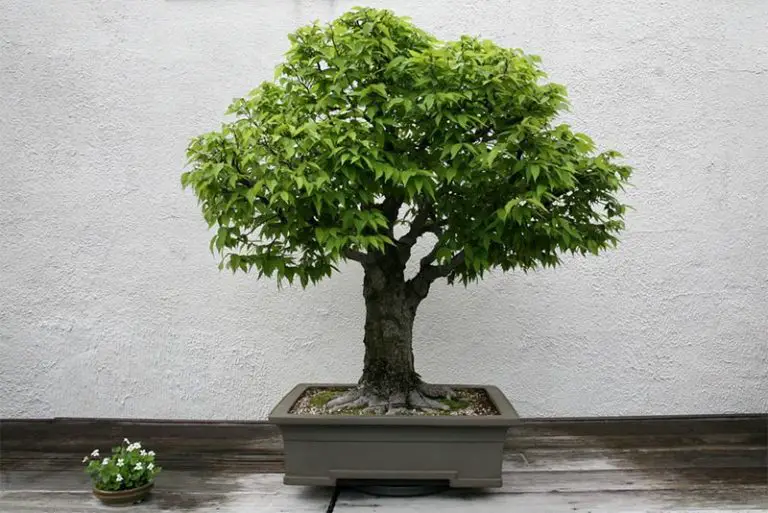
Image courtesy of 4.0 International
Japanese Elm
Zelkova serrata has stunning broom-style foliage that you can keep small enough to maintain on your windowsill. It’s not to be confused with Ulmus davidiana var. japonica, which is also known as the Japanese Elm. The grey bark looks beautiful against the green leaves and blends well with white or off-white paint or plaster on your walls.
It loves full sun, so be sure to place it on your south-facing windows in the northern hemisphere, and north-facing sills in the southern hemisphere. When the summer heat cranks up, look into supplying some shade in the peak afternoon to protect it from leaf burn.
Beech
The Fagus genus has hardy, gorgeous trunks that support beautiful green leaves in summer. When autumn arrives, they change to orange, yellow, or brown, depending on the species. It will put on a stunning display on your windowsill all year round.
The fruit capsules are spikey and wooden, but you’ll be lucky if you see any of them if it’s a young bonsai. Even though you’ll keep the tree small, you’ll see lovely flowers in the summer. The chances of it bearing fruit depend on whether any flying insects or the wind has a chance to pollinate them.

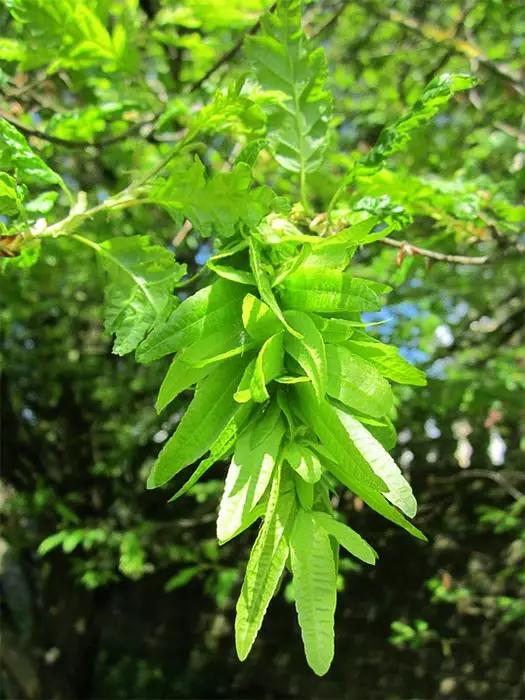
Hornbeam
The Carpinus has about 40 species that are native to the Northern Hemisphere, many of which you can bonsai for your windowsill. The seeds have wing bracts, while the leaves are striped in a similar way to the Chinese Elm. It also has a strong trunk that can withstand most conditions, even falling off the ledge.
As with the beech, the leaves turn brown or orange in autumn for a stunning display. Watch out for the soil drying quickly in summer, as the Hornbeam bonsai won’t like that at all. It will enjoy the full sun, though.
Tall Stewartia
Stewartia pseudocamellia, also known as the Japanese Stewartia, has red-brown wood with brilliant green foliage. In summer, it displays beautiful white flowers that will do well in any office environment. In autumn, the leaves may become purple or scarlet, which will impress your family and colleagues.
It grows vigorously, so you’ll need to regularly prune it in spring and summer to maintain it as a small bonsai on your windowsill. While it prefers being outdoors, you can comfortably keep it in full sunlight by your window. You’ll need to water it often in the warmer months, as it becomes quite thirsty.

Image courtesy of 4.0 International
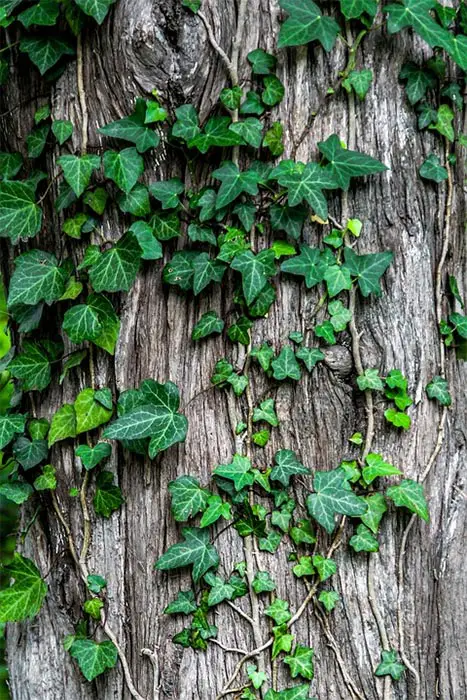
Ivy
The Hedera genus is small, with only about 15 species in it. There are some Ivy trees that work remarkably well as bonsais, as long as you can trim the leaves to keep them small. When it starts its journey as a climber, you’ll see small hairy shoots and lobed leaves.
You’ll have to keep working on the design to change the appearance from a creeper to a sturdy bonsai tree on your windowsill. It needs partial shade, and you’ll need to check the soil to see how much water it likes. Each species is different, so ensure you make sufficient observations.
Ginseng Ficus
While the Weeping Fig is popular as pot plants in the office or at home, it doesn’t suit the small bonsai lifestyle. Instead, you should aim for another Ficus that sells well: the Ginseng Ficus. The Ficus retusa has a rather unique shape, one that many people enjoy on their windowsills.
It’s easy to maintain the small size, and it will happily grow as many or as few leaves as you want. As the trees and trunk swell up, you’ll need to watch the weight of the container to see if your ledge can support it.
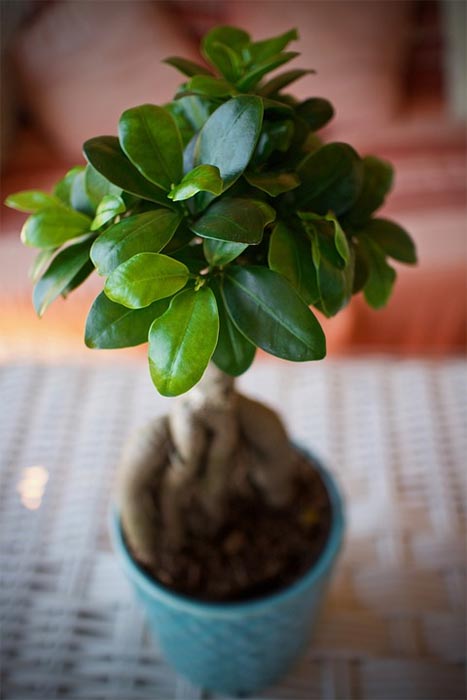
Types of Windowsills for Bonsais
Before we break into a discussion of how to decide which of the small bonsais for windowsills to buy, let’s look at the two different sill types based on placement. This aspect is significant, as it will determine which species will suit you best.
Interior
The interior window ledge is the one mostly used to grow small bonsais and plants. The window protects them from the outside elements while allowing sunlight to enter.
If your window is tinted, it provides extra defense from sunburn on the leaves and bark. The interior windowsill is ideal if you have a chair or sofa nearby to admire your bonsais.
Exterior
Some people also place small bonsai on the exterior windowsill, but there are some inherent dangers that we’ll take a look at a bit later. For now, it’s worth mentioning that these outside ledges are ideal if you have trees that need full sun for several hours. It’s also perfect for giving them natural water when it rains.
Straight and Angled
In most cases, the interior ledge is straight and the exterior angled. The primary reason for the latter is letting the rain flow off easily so it doesn’t remain stagnant or creep into your home. It also prevents mold from forming on the facade.
The slope of the windowsill will determine whether you can place small bonsais on it. If it’s too steep, it will fall off and cause damage. There are ways to secure it, but it’s better if you have a ledge that’s as level as possible.
Depth
Some ledges are shallow while others are deep. Some workplaces have incredibly deep interior windowsills, which is ideal for office bonsai trees. There are also apartments with deep dimensions, specifically in the bedrooms as placeholders for items.
For the most part, homes have narrow sills, which means you can only put small bonsais on them. The shorter the depth, the smaller your container will need to be. This factor places a restriction on the tree’s height if you follow conventional bonsai practices.
Material
The material plays an essential part in whether you’ll place bonsai on them, specifically with how heavy the container is. Here are the main windowsill material types you may find in homes and offices:
- Wood: these timber sills work well with bonsais, as they complement the tree’s trunk and branches. The main concern is if water messes or the drainage, and it can cause water damage if the sill isn’t protected sufficiently. Generally, they have layers of waterproofing.
- Tile: Some old cottages and homes are known for having tiled windowsills. You may even find some with mosaic tiles, which match well with bonsai trees that have glossy leaves.
- Stone: Here’s another material that works well with small bonsais on windowsills. The natural stone blends with any rock formations you have in the container, specifically root-over-rock styles.
- Metal: While not a favorite for the noise it produces when rain falls on it, some modern apartments and homes have aluminum sills. If you have any rustic designs in your miniature landscape, you can become creative with your placement and theme.
- Plastic: These sills can withstand some damage and are waterproof. You’ll just need to check how well it can support the weight of your bonsai.

Factors to Consider For Windowsill Bonsais
Now that you’ve seen which bonsai species works well on windowsills and the sill types, it’s time to see what aspects to consider before buying your small tree. Ensure you work through each of these to protect both the sill and bonsai from damage.
Dimensions
When we say dimensions, we’re referring to the bonsai tree and the window ledge. First, measure how deep it is so you know what pot diameter or width it can take. You may even be able to place a few small trees on there if you space them properly.
Basic Bonsai Requirements
When it comes to bonsai tree care, the same rules apply to your windowsill. You’ll need to check how often the soil dries so you can plan a watering schedule per day and week. You should also check how much humidity the tree receives, which will differ for interior and exterior sills. Finally, it’s best to check how easy it will be to prune your small trees, as some species grow quickly in spring.
Hours of Sunlight
One of the bonsai requirements we want to spend some time on is sunlight. The direction your window faces will have a massive effect on your tree. In the northern hemisphere, your south-facing window will receive most of the direct light. Where you place your bonsai depends on how many hours of sunlight that species can handle during the day.
Leaf Scorch
Another aspect linked to sunlight for small bonsais on windowsills is leaf scorch. While many of the species we’ve mentioned enjoy these locations, too much sun for too long can burn delicate leaf edges or new growths. If the tree doesn’t get some shade during peak afternoon, you may want to consider moving them.
Open Windows
We’ve heard of many situations where open windows have caused damage to small bonsais. Sometimes, there’s a strong wind that blows them over, which can also soil your carpet if it lies there for too long. Some bonsai trees also don’t like draughts constantly blowing on them.
Dangers
You’ll need to perform a small risk assessment when deciding to place small bonsais on windowsills. If you have others sharing the home or office with you, you need to ask them not to knock them over. We’ve heard of situations where someone’s grandparent wasn’t careful when opening a window and knocked the pot over.
If you have pets at home, we don’t need to explain the dangers here. Especially with cats, they don’t have any regard for your bonsai trees. Some of them use the pots to jump up to a higher window opening, which will then send the container tumbling to the floor if not secured. Pets also like to drink the water in the trays.
Securing a Bonsai to the Windowsill
There are a few ways you can secure your small bonsais to the windowsill, depending on the material. Your approach will also need to take into account the depth and whether you can extend the ledge. Here are a few options:
- Bolted metal brackets for sill extensions
- Eyelets screwed into the wall on the side of the container
- A window ledge pot rack
- Strong wiring
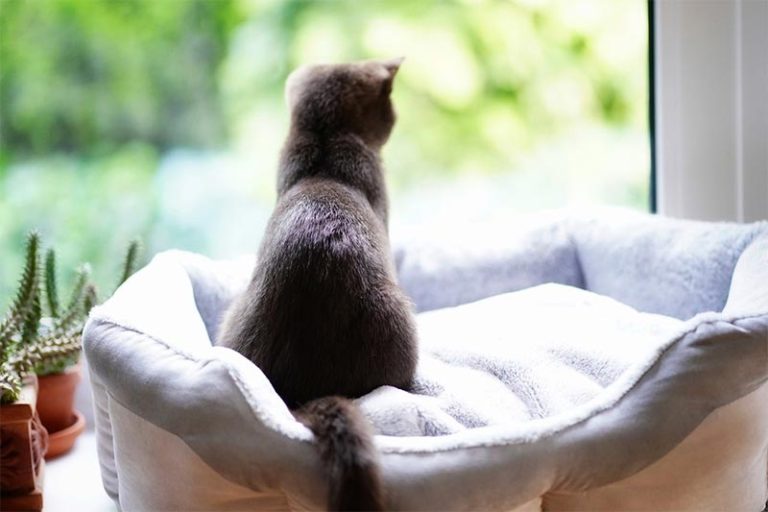
Organizing your Windowsill
While our main focus has been small bonsais for windowsills, many people also decorate the space with other objects. It helps define the ledge, adding culture and flair to your window. Your mission is to add items that complement your miniature tree instead of conflicting with it.
A wonderful choice is placing tiny succulents and cacti in any empty spaces to make the design look fuller. If you’re going for a minimalistic theme, you can add decorations, books, jewelry boxes, or even crystals that reflect the sunlight.
You should avoid hiding a small bonsai behind a larger one. While you’ll be able to see it better from inside your room or office, the bigger pot and tree may block the sunlight from outside. Ensure there’s enough spacing between them, and don’t overcrowd the sill.
Final Thoughts
Obtaining small bonsais for your office or apartment windowsill can be an exciting adventure. The planning itself can be fun, and there’s satisfaction after you’ve achieved your final design. When everything goes according to plan, you can sit back and watch the sunlight glisten off the leaves and gorgeous flowers.








One Response
Very interesting article!